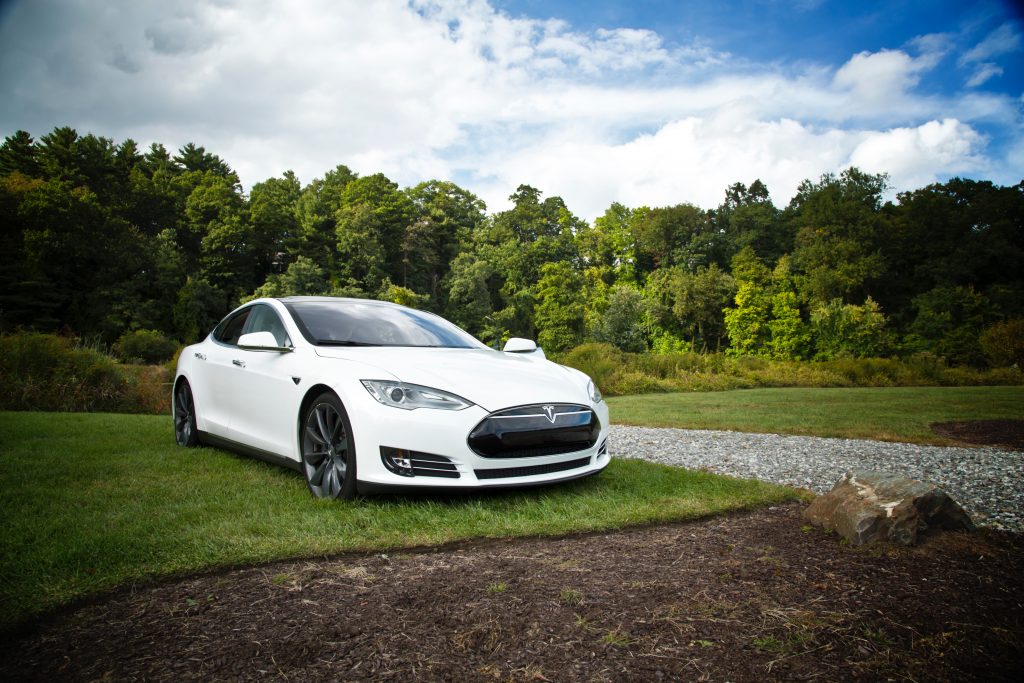by C. Crampes and Y. Lefouili (Toulouse School of Economics)
The development of electric vehicles is hampered by batteries which discharge too quickly and charge up too slowly. Every car manufacturer has a private interest in increasing the discharge time of its battery. Yet when defining the technical features of charging points, there is a conflict between private and collective interests.
Standardisation
We can connect any household appliance to the electricity network without checking the voltage. This universal compatibility is the result of individual strategic decisions by manufacturers, agreements arising from technical collaborations at the industry level, and obligations imposed by public authorities, sometimes continent-wide.
This is not quite the case when filling up a car’s fuel tank. We need to be careful not to mix up different fuel to avoid causing damage to the engine. But it is true that all car brands use the same types of fuel and they can be found at most petrol stations.
However, the problem of “refuelling” compatibility is resurfacing, with the increase in the number of electric vehicles (EV) in circulation. EV manufacturers can produce high-performance engines and they are making steady progress regarding battery life. Despite this progress, we still can’t plan a long journey with peace of mind, because to “refuel with electricity”, we have to: i) find a charging point, ii) ensure it is compatible with the vehicle, and iii) not wait too long to charge up. These conditions are still far from being met.
Compatibility between EV and the charging network
An EV owner who is not in a hurry can always connect a battery to their home’s electricity supply. The same applies at work, and they can charge between when they arrive in the morning and leave in the evening. However, fuel-powered cars have been so successful because they reduce travel time between cities. Whether or not the electric car is a success will, therefore, depend on its performance over medium and long distances. To offer the same service, it must be possible to charge an EV in roughly the same amount of time it takes to fill up a fuel tank – a maximum of ten minutes, which requires fast charging stations. These facilities are created by electricity distribution companies, regional authorities, motorway concession owners and EV manufacturers. The majority of the latter group quite rightly believe that the vehicle and the charging stations are two crucial parts of the same product. Tesla is a famous example.
The war of standards
Manufacturers have a common interest to ensure that there are a large number of fast charging stations along roads and motorways which can be used by all types of electric vehicles. Consequently, they just need to sit down to define the technical features and communication protocols applicable to all charging points. This would be simple – if manufacturers hadn’t already defined multiple standards, whether individually or in small groups.[1] And as each of these standards is protected by a collection of patents and proprietary protocols, the collective benefits of adopting unique specifications disguise royalties which would benefit the company or group of companies whose standard is adopted.
A war of standards has broken out between the SAE Combo Charging System (BMW, GM, VW), CHAdeMO (Nissan, Mitsubishi, Kia), GB/T (Chinese manufacturers) and Supercharger (Tesla).[2] This configuration – where individual interests and collective interests are partially divergent – is known in non-cooperative game theory as the Battle of the Sexes.[3] On the one hand, if there was a single standard, those interested in purchasing an EV would take the plunge more easily as they would be more confident that they could find a station when they need to charge their vehicle. Manufacturers would collectively benefit. On the other hand, the manufacturer whose standard is chosen gets the best of both worlds: not only will it sell more vehicles, which is true of all manufacturers – but it can also get others to pay royalties for patent usage licences. Like the Battle of the Sexes, the war of standards has several possible outcomes, i.e. several strategic combinations where each player is satisfied with their decision given the decisions of other players. And each player wants to see “their” outcome win, i.e. their standard be adopted.
De jure and de facto standards
There are essentially two solutions to break the deadlock. The first is that a political or professional authority – a standardisation organisation such as Cenelec – obtains a de jure solution from manufacturers, with the benefits shared to compensate those whose technical solution was not chosen, and who must, therefore, adapt their technology. To an extent, the initial game is made cooperative, by adding a stage where the benefits are shared among the participants in the agreement.
In the other solution, the current war becomes a war of attrition, resulting in a de facto standard – the winner’s standard. If one of the competitors convinces a sufficient number of buyers that their technology is superior, their charging network grows more quickly than other manufacturers, and this continues to reinforce its appeal, as any person buying a new EV will prefer to opt for this network. That was how the combustion engine prevailed over the electric engine over a century ago.
There is also the possibility of several standards like with PCs, where Apple has been able to counter the increasing power of Windows.
* * *
Currently, the future of the electric vehicle will most likely be decided by the fast charging network rather than the manufacturing workshops. In terms of collective interest, the identity of the winner is unimportant, unless the adopted standard is the least technologically advanced. France has set a target to install at least seven million charging points by 2030 (art. 41 of the LAW n° 2015-992 dated 17 August 2015 regarding the energy transition for green growth). In terms of private interest, by investing heavily in the charging infrastructure, each manufacturer can hope to have a better chance to take the lead than if they invested in marginal improvements to their vehicles.[4]
[1] For technical details, see https://greentransportation.info/ev-charging/range-confidence/chap8-tech/ev-dc-fast-charging-standards-chademo-ccs-sae-combo-tesla-supercharger-etc.html
[2] For the different socket types, see https://www.zap-map.com/charge-points/connectors-speeds/
[3] See https://pdfs.semanticscholar.org/aa54/ff493429db9b6298a6e40a8d7b3adb2737c9.pdf page 11.
[4] On a similar topic, you can read the article by G. Pavan which demonstrates that the development of alternative fuels (LPG, CNG) is better secured through a subsidy for petrol stations so that they install pumps, rather than a subsidy for those buying the vehicles using these fuels; https://www.tse-fr.eu/sites/default/files/TSE/documents/doc/wp/2017/wp_tse_875.pdf






